Nokia 4A0-107 Nokia Quality of Service Exam Practice Test
Nokia Quality of Service Questions and Answers
Real-time rate limiting on the service ingress is a feature that performs_____________. Traffic above the defined PIR is ______________.
How does a shaper rate-limit a traffic stream?
On the Nokia 7750 SR, what is the maximum number of queues that a single SAP-ingress policy can support in a VPLS?
Which of the following statements about a queue’s rate parameters is FALSE?
Click the exhibit button below. Each router is interconnected by a single GigE link, as shown in the diagram below.
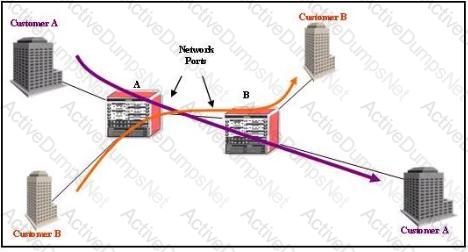
Note: The arrows show the direction of traffic flow.
Traffic from Customer A and Customer B that is classified to the same forwarding class is queued together at the ingress of Router B.
On the Nokia 7750 SR, which of the following QoS-related policies can be configured on a SAP? (Choose three)
Which of the following are trusted boundaries, by default? (Choose two)
Which of the following statements regarding the default scheduler in the Nokia 7750 SR are TRUE? (Choose two)

According to the configuration shown above, which of the following about the classification and marking of self- generated BGP traffic is TRUE?
According to the configurations shown, which of the following statements about the classification and queuing of self-generated OSPF traffic is TRUE?
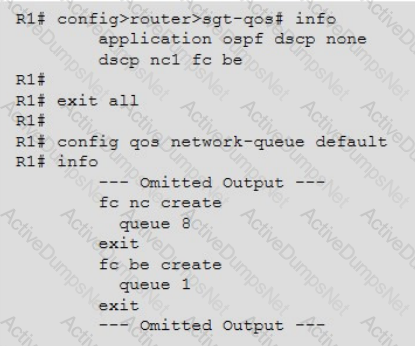
Which of the following statements about CIR of a queue is TRUE?
Which of the following statements describe the operation of WRED on the Nokia 7750 SR? (Choose three)
Which of the following statements describe the operation of WRED on the Nokia 7750 SR? (Choose three)
Packets enter the network via the ePipe SAP on PE1 with dot1p marking of 6. The VC type of the SDP interconnecting PE1 and PE2 is vlan. All network interfaces use the default network QoS policy. According to the configuration shown above, what is the inner dot1p value of the BE traffic egressing router PE2?
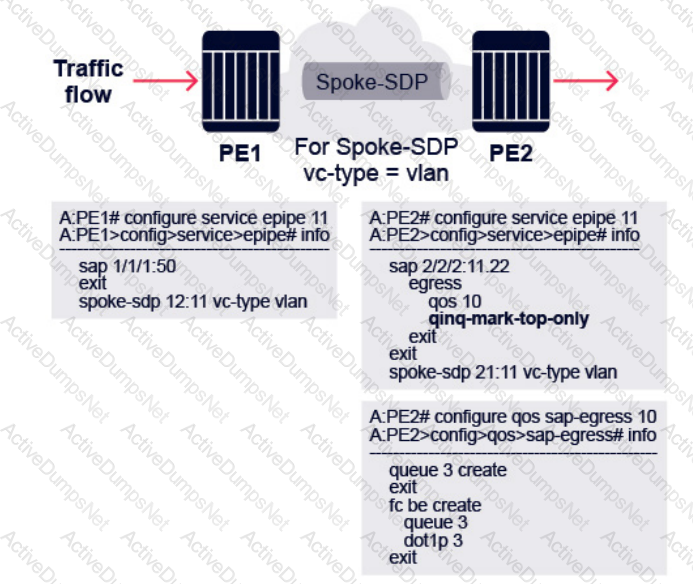
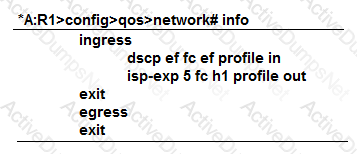
In the image shown above, the network QoS policy is applied properly to a Nokia 7750 SR. An MPLS packet with dot1p=1, EXP=4, and DSCP=AF is received. Which forwarding class and profile is assigned to this packet?
Assume all transmitted frames on a SONET port are 1500 bytes and that the average frame overhead has been configured as 10%. If the total bandwidth of all queues, excluding overhead, needs to be guaranteed at 55 Mbps, how much bandwidth should be configured for the egress port scheduler applied on that port?
Which of the following are categories of forwarding classes on the Nokia 7750 SR? (Choose two)
On the Nokia 7750 SR, which of the following QoS-related policies can be configured on a SAP? (Choose three)
Click the exhibit button below.
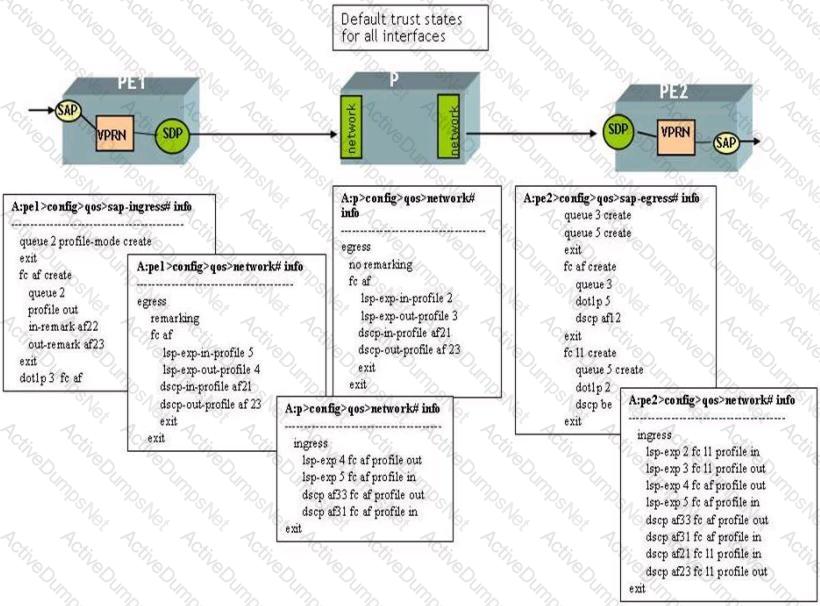
All interfaces are using their default trust states and MPLS is used as the transport tunnel. The SAP-ingress, SAP-egress, and network QoS policies have been configured as shown below. Assume that the default network-queue policy is used on each router.
At router PE 1, customer traffic is arriving marked with DSCP BE and tagged with a dot1p value of 3.
Based on the configuration shown below for the VPRN service, what will be the DSCP and dot1p marking for the packet egressing at router PE 2? (Choose two)
Which of the following statements about behavior aggregate and multi-field classification in a Nokia 7750 SR is TRUE?
Which of the following are major components of QoS functionality on the Nokia 7750 SR? (Choose three)
Which of the following statements are TRUE regarding the building of a QoS-enabled network? (Choose two)
Which of the following statements describes an advantage of the DiffServ QoS model over the IntServ QoS model?
Which of the following statements regarding policing and shaping on the Nokia 7750 SR are TRUE? (Choose two)
In which of the following scenarios is the egress port scheduler useful? (Choose two)
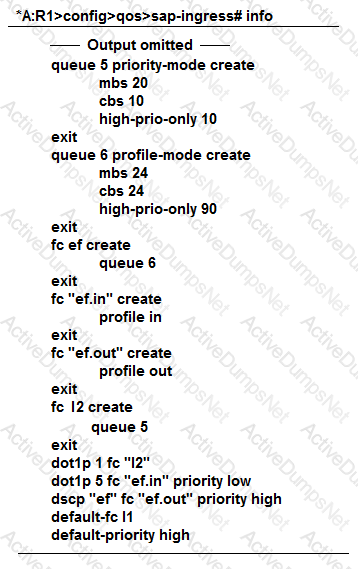
According to the SAP-ingress QoS policy shown, what is the maximum amount of memory that queue 5 can use from the shared buffer pool?
Which of the following statements BEST defines policing?
At which points can traffic be marked or remarked on the Nokia 7750? (Choose two)
According to the SAP-egress policy configured and applied, which queue will forwarding class AF’s traffic use?
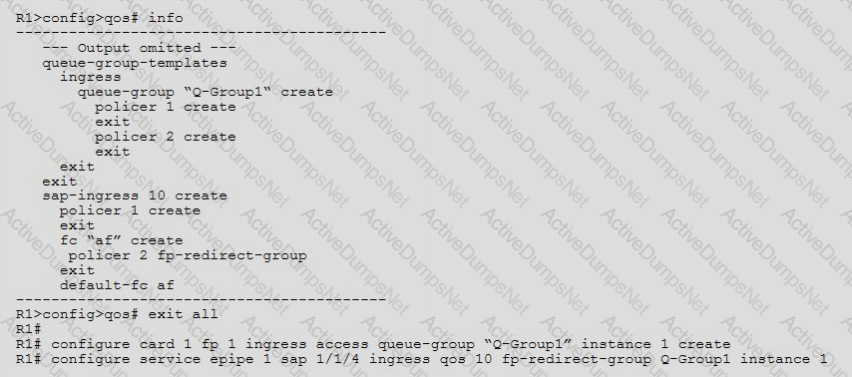
Click the exhibit button below. A service provider has applied the SAP-ingress policy configuration below on his customer's SAP. The service provider notices that all of the customer's traffic is being dropped at the SAP-ingress. Which of the following actions can resolve the problem, if applied on its own? (Choose three)
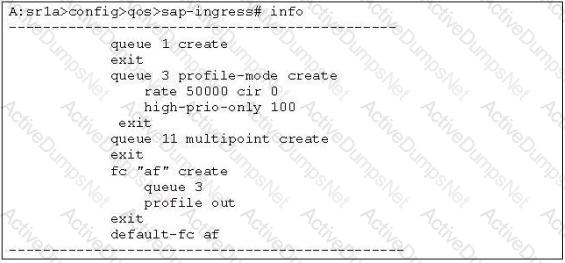
Which of the following statements about the token buckets of a policer is TRUE?
Which action should be taken to ensure that packets do not use the shared buffer space when put into a queue?
Which of the following statements about configuring queues to use shared or reserved buffer space is FALSE?
Which of the following statements regarding the default scheduler in the Nokia 7750 SR are TRUE? (Choose two)
